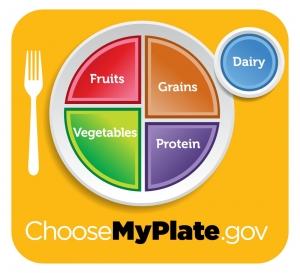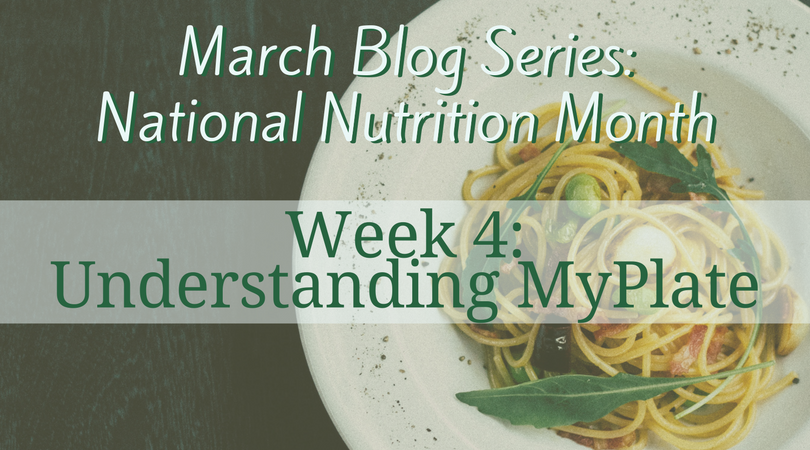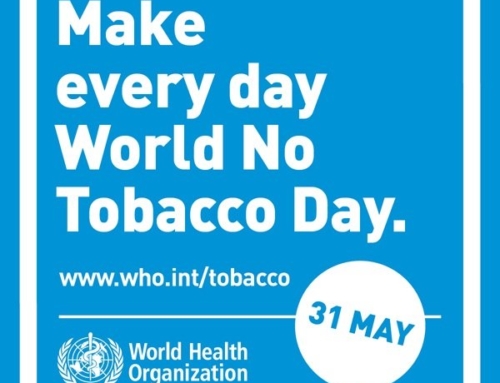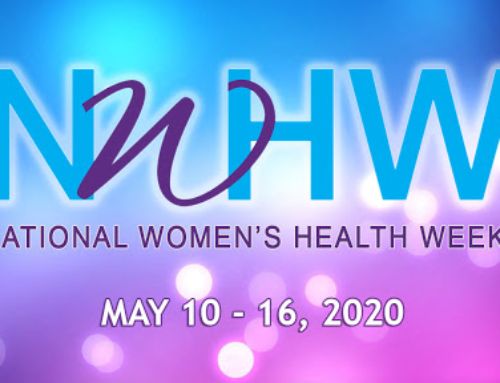If you’re looking to improve the quality of your diet, using MyPlate as a guide is a great place to start. MyPlate recommends that your diet be comprised of 50% fruits and vegetables, 50% grains and lean protein, plus some low-fat dairy and limited added fats/sugars. It’s important to note that the plate in MyPlate represents your total dietary intake; your actual breakfast, lunch, and dinner plates don’t have to be divided like the picture.

Fruits and vegetables: Half of what you eat should be fruits and vegetables. Fruits and vegetables decrease inflammation in your body, improve digestion, and decrease risk for heart disease, stroke, and certain types of cancer. While the “whole” version provides the most nutrients and fiber (compared to juice or dried versions), it doesn’t matter if it’s fresh, frozen, or canned as long as it’s not sitting in syrup. Have fun experimenting with produce; “eating the rainbow” (i.e., choosing fruits and vegetables with different colors) provides your body with a variety of nutrients.
Protein: A quarter of your diet should be low-fat sources of protein. Protein is necessary for healthy cells, helps you feel fuller longer after eating, and provides an array of vitamins (e.g., vitamins B and E, iron, zinc, magnesium). Low-fat animal sources of protein include skinless chicken or turkey, > 90% lean ground beef or turkey, egg whites, and seafood. Processed meats like sausage, hot dogs, and deli meats should be eaten less often because they often contain high levels of sodium, fat, and chemicals. Plant-based sources of protein include nuts, seeds, beans, lentils, peas, and soy products.
Grains: A quarter of your diet should be made of grains, and half of all grains you eat should be “100% whole grain.” Grains are an important source of short-term energy for the body. “Whole grain” indicates that the grain is less processed, which means it keeps more of its natural fiber and nutrients. Try choosing whole grain versions of bread, cereal, and pasta, or try incorporating naturally whole grain products like oats, brown rice, low-fat popcorn, and quinoa.
Dairy: Low-fat dairy is an important source of calcium for maintaining healthy bones, muscles, and nerves. Occasionally including low-fat yogurt, skim milk, or low-fat cheese can help you get the calcium you need. Calcium is also found in non-dairy sources, such as milk alternatives (soy, almond, flax, etc.), soy products (cheese or tofu), calcium-fortified juices or grains, and dark leafy greens.
Fats: Small amounts of fat are necessary for healthy hair and skin, but the type of fat matters when it comes to your health. Aim for the fat you eat to come from unsaturated sources (e.g., olive oil, vegetable oils, nuts, seeds, avocados, fish) while limiting fat from saturated sources (e.g., butter, meats, dairy, coconut). In contrast to unsaturated and saturated fats, trans fats does not have any health benefits; foods with “hydrogenated” or “partially hydrogenated” listed in the ingredients should be avoided (e.g., margarine, shelf-stable baked goods, fried foods, some dressings).
Sugars: Added sugars (e.g., table sugar, molasses, honey, agave) may contribute to inflammation and weight gain, so save foods with added sugars for special occasions (e.g., sugar-sweetened beverages, candy, baked goods, ice cream, snack foods). When a sugar craving strikes, try eating a piece of fruit to see if it satisfies your taste buds. Don’t be confused by fad diets; added sugar is different than the sugars that occur naturally in fruits, vegetables, grains, and dairy.
With that basic introduction to MyPlate, you should feel more confident about making small changes to improve the quality of your diet. Let us know in the comments how your changes go!
About the Author: Aviva Ariel-Donges, M.S.
 |
Aviva Ariel-Donges, M.S., is an intern at SRAHEC. She is currently finishing a master’s in public health and a doctorate in clinical health psychology at the University of Florida. |







